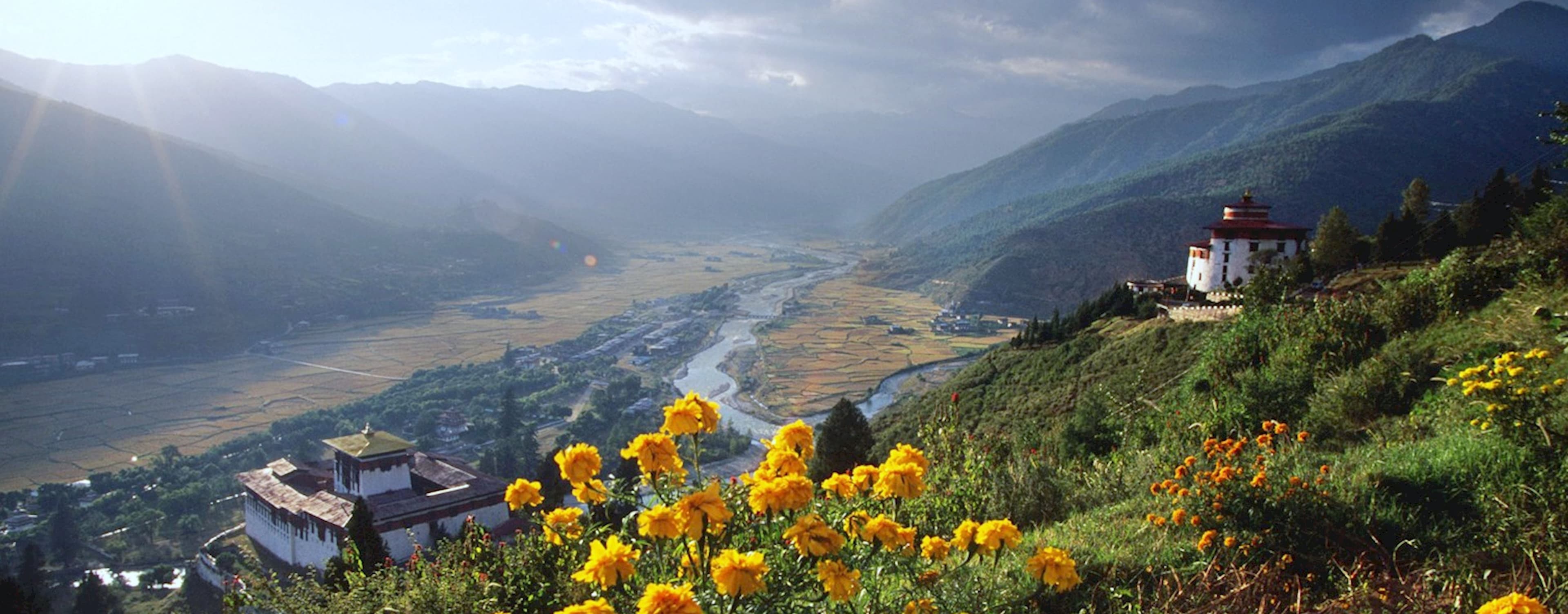Bhutan, often referred to as the last Shangri-La, is a testament to harmonious conservation, housing numerous National Parks and Wildlife Sanctuaries that preserve its stunning natural heritage. These protected areas, such as the famed Jigme Dorji National Park and the Royal Manas National Park, showcase a diverse array of flora and fauna, including several endangered species. With initiatives focused on Bhutan Conservation Efforts and eco-tourism, these sanctuaries offer spectacular opportunities for birdwatching, wildlife photography, and hiking, making them crucial for both environmental preservation and cultural appreciation. As visitors explore these sanctuaries, they are immersed in Bhutan's commitment to ecological preservation and sustainable tourism.
Amen Bhutan Tours and Treks is the best company to explore the National Parks and Wildlife Sanctuaries in Bhutan. With our expertly guided tours, we provide immersive experiences in Bhutan’s pristine natural environments, offering unparalleled opportunities to witness the country’s stunning flora, fauna, and endangered species. Our commitment to sustainable tourism practices ensures that every adventure through Bhutan's national parks and sanctuaries is not only unforgettable but also contributes positively to the conservation efforts that make Bhutan a true eco-paradise.
Jigme Dorji National Park
Jigme Dorji National Park stands as one of Bhutan's most significant conservation triumphs. Here's an in-depth look at this magnificent park:
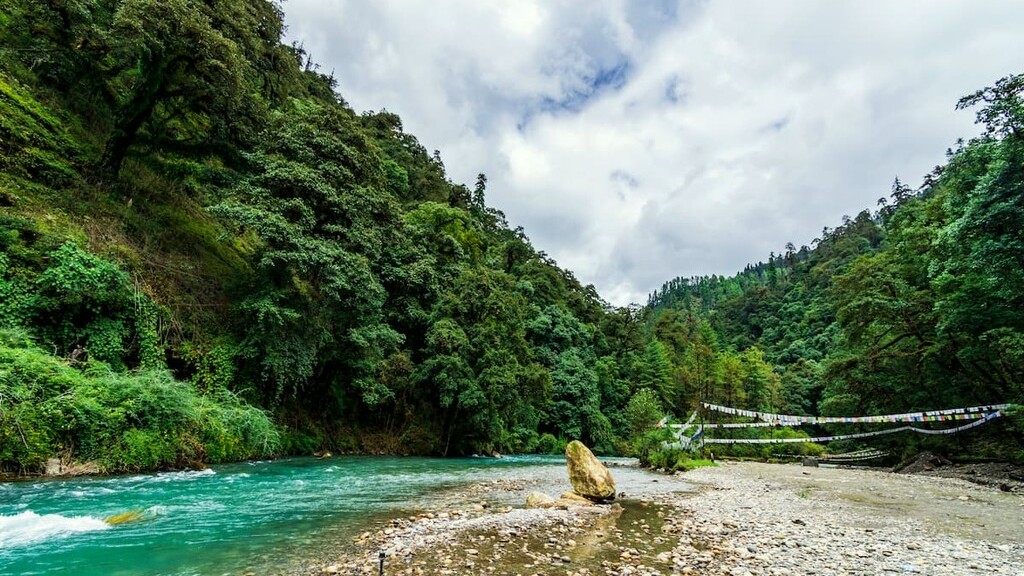
- Overview: Established in 1974, Jigme Dorji National Park is the second-largest national park in Bhutan, covering an area of about 4,316 square kilometers. It spans across several districts including Paro, Thimphu, and Punakha, reaching all the way to the northern borders where it touches China. The park is named after the late Jigme Dorji Wangchuck, the Third King of Bhutan, who played a pivotal role in opening Bhutan to the outside world.
- Biodiversity: The park is renowned for its diverse range of habitats, from lush lowland forests to high-altitude alpine tundra. This variety supports a wide spectrum of wildlife. It is one of the few places in the world where the Royal Bengal Tiger and the snow leopard share territory. Other notable species include the Himalayan blue sheep, takin (Bhutan's national animal), black bear, red panda, and over 300 species of birds, making it a bird watcher’s paradise.
- Cultural Significance: Jigme Dorji National Park is not only important for its biodiversity but also for its cultural treasures. It encompasses several sacred sites including Mount Jomolhari, revered by local communities and trekkers alike. The park also hosts several annual festivals, which are integral to the local communities’ cultural and spiritual lives.
- Conservation and Eco-Tourism: The park plays a critical role in Bhutan’s conservation efforts, particularly in the protection of endangered species and their natural habitats. Eco-tourism is encouraged, with strict guidelines to ensure minimal impact on the environment. Treks through the park offer awe-inspiring views and encounters with pristine wilderness areas, providing visitors with a unique opportunity to connect with nature.
- Trekking and Activities: Jigme Dorji National Park is a hotspot for trekkers, offering some of the most spectacular trekking routes in Bhutan, including the famous Jomolhari Loop. The treks provide challenging and rewarding adventures through remote and dramatically scenic areas of the park. In addition to trekking, visitors can engage in wildlife photography, bird watching, and participation in local festivals.
- Conservation Challenges: While the park is a stronghold for wildlife preservation, it faces challenges such as human-wildlife conflict, particularly in areas where communities and wildlife territories overlap. The park authorities, in collaboration with conservation NGOs, work continuously to mitigate these issues through community engagement and sustainable development practices.
Jigme Dorji National Park is not just a haven for biodiversity but a cornerstone of Bhutanese heritage, blending natural beauty with cultural richness. It symbolizes Bhutan's commitment to maintaining ecological balance and preserving its unique environment for future generations.
Royal Manas National Park
Royal Manas National Park is Bhutan's oldest national park and a crown jewel in the country's commitment to conservation. Here's a detailed look at this spectacular park:

- Overview: Established in 1966, Royal Manas National Park is situated in the southern part of Bhutan, bordering India's Manas Tiger Reserve. Covering an area of about 1,057 square kilometers, it forms a crucial part of the Bhutan-India transboundary conservation area, facilitating wildlife migration and biodiversity conservation across national boundaries.
- Biodiversity: The park is celebrated for its rich biodiversity and is often referred to as the "conservation showpiece of the Kingdom." It hosts a vibrant array of wildlife, including endangered species like the Royal Bengal tiger, Asian elephant, and the rare golden langur. The park's diverse ecosystems range from tropical and subtropical forests to riverine and grassland habitats, supporting over 365 species of birds, making it a paradise for birdwatchers.
- Eco-tourism and Activities: Royal Manas National Park is a prime destination for eco-tourism in Bhutan, offering a variety of activities that allow visitors to explore its natural beauty responsibly. Wildlife safaris are a highlight, providing sightings of elephants, gaurs, and if lucky, the elusive tiger. The park also offers river rafting on the Manas River, jungle treks, and cultural experiences with the local communities who live in harmony with nature.
- Conservation Efforts: The park's proximity to the Manas Tiger Reserve in India enhances its importance as a critical habitat for the tiger population in the region. Conservation efforts are focused on protecting these habitats and ensuring sustainable livelihoods for the local communities through eco-tourism. Initiatives such as anti-poaching patrols, wildlife monitoring, and habitat restoration are actively pursued to maintain the park's ecological integrity.
- Challenges and Community Involvement: Like many protected areas, Royal Manas National Park faces challenges including poaching and human-wildlife conflict. To address these, the park management collaborates closely with local communities and international conservation organizations to promote conservation awareness and develop alternative livelihoods that reduce dependence on forest resources.
- Cultural Significance: The park is not only an ecological treasure but also a cultural one. It is deeply integrated into the local culture, with several sacred sites within its boundaries. The communities surrounding the park celebrate various traditional festivals, which often include rituals that underscore their respect and reverence for the natural world.
Royal Manas National Park is a testament to Bhutan’s enduring legacy of environmental conservation. It offers a blend of thrilling wildlife experiences and the serene beauty of untouched nature, all while contributing significantly to the conservation of some of the region's most endangered species and their habitats.
Phibsoo Wildlife Sanctuary
Phibsoo Wildlife Sanctuary is a unique and critical protected area within Bhutan, distinguished by its rare ecosystems and commitment to conserving the kingdom’s diverse wildlife. Here’s an insightful look at this lesser-known sanctuary:
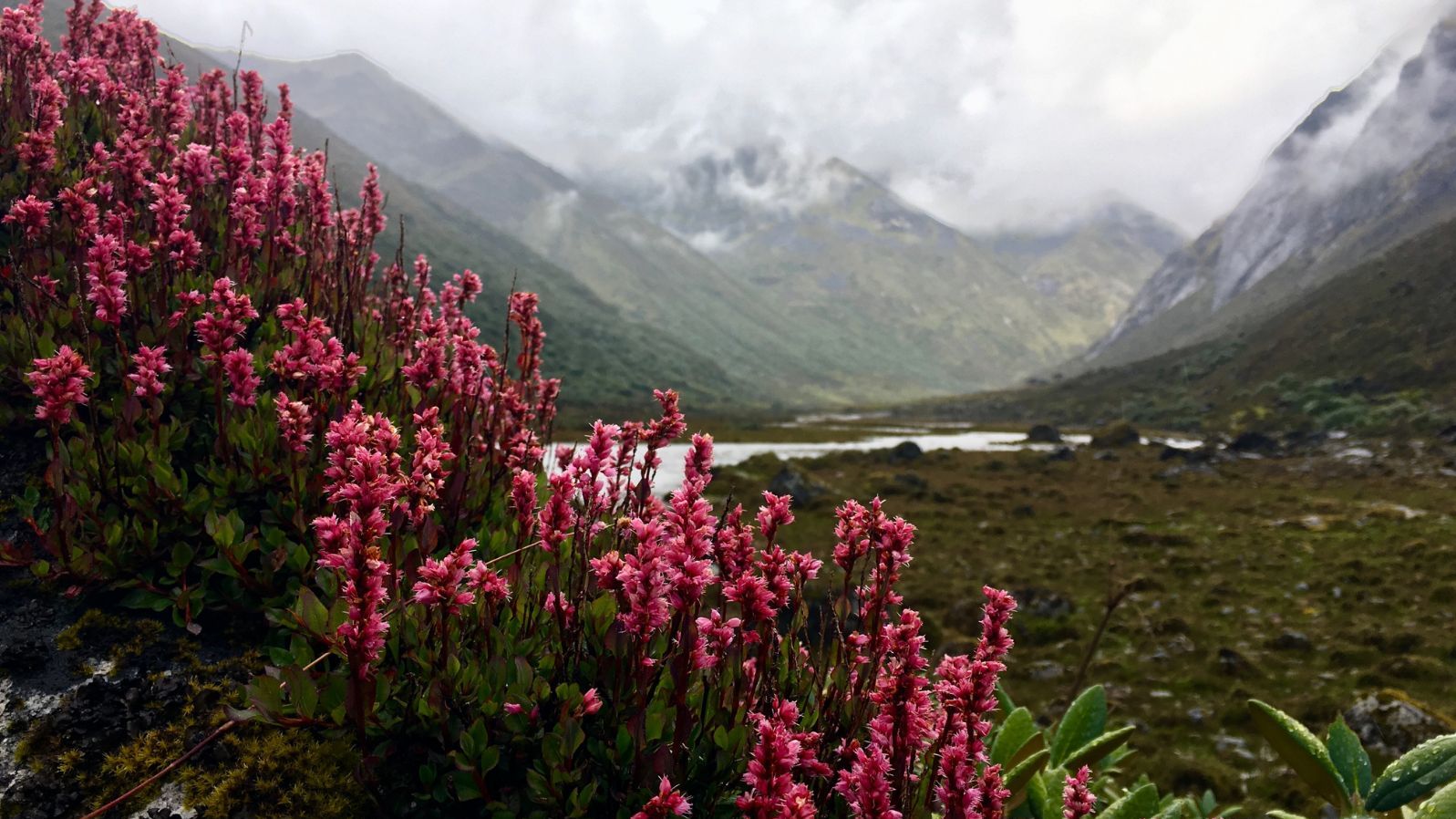
- Overview: Established in 1974, Phibsoo Wildlife Sanctuary covers an area of approximately 268 square kilometers, making it one of the smaller conservation areas in Bhutan. It is located in the southwestern part of the country, bordering the Indian state of West Bengal. This sanctuary is particularly notable for being the only area in Bhutan that preserves the natural sal (Shorea robusta) forests, a type of habitat that is uncommon in the rest of the kingdom.
- Biodiversity: Phibsoo Wildlife Sanctuary is home to a unique blend of flora and fauna, with its standout feature being the sal forest, which provides a critical habitat for a variety of wildlife. The sanctuary is renowned for its populations of the endangered royal Bengal tiger and the rare Asian elephant. Additionally, it supports other species such as the spotted deer, barking deer, and various primates. For bird enthusiasts, Phibsoo offers a chance to spot several exotic bird species that are endemic to this particular ecosystem.
- Conservation Efforts: The conservation efforts in Phibsoo are geared towards preserving its unique sal forests and the endangered species that inhabit them. These efforts include anti-poaching initiatives, habitat restoration, and wildlife monitoring programs. The sanctuary's management works closely with local communities to mitigate human-wildlife conflicts, especially in areas adjacent to human settlements.
- Eco-Tourism and Activities: While Phibsoo Wildlife Sanctuary does not see the same level of tourist traffic as some of Bhutan’s larger parks, it offers unique opportunities for wildlife watching, especially for those interested in observing the royal Bengal tiger in its natural habitat. The sanctuary's remote and pristine environments also make it ideal for nature walks and bird watching, providing a tranquil experience away from more crowded sites.
- Challenges: Managing a wildlife sanctuary like Phibsoo comes with its set of challenges, primarily related to its proximity to human settlements. Human-wildlife conflict, habitat encroachment, and illegal logging are ongoing concerns that require constant vigilance and innovative management strategies to ensure the protection of this unique ecosystem.
- Cultural and Community Engagement: Phibsoo Wildlife Sanctuary also plays a role in the cultural landscape of Bhutan. The local communities hold deep spiritual connections with the forest and its wildlife. Conservation programs often incorporate local knowledge and traditions, which helps enhance community-led conservation efforts and promotes sustainable coexistence between humans and nature.
Phibsoo Wildlife Sanctuary, with its distinct sal forests and rare wildlife, is a crucial component of Bhutan's conservation network. Its conservation serves not only to protect its unique biodiversity but also to maintain the ecological balance and cultural heritage of the region.
Bumdeling Wildlife Sanctuary
Bumdeling Wildlife Sanctuary is an integral part of Bhutan's extensive network of conservation areas, offering a unique blend of natural beauty and ecological importance. Here's a detailed look at this sanctuary:
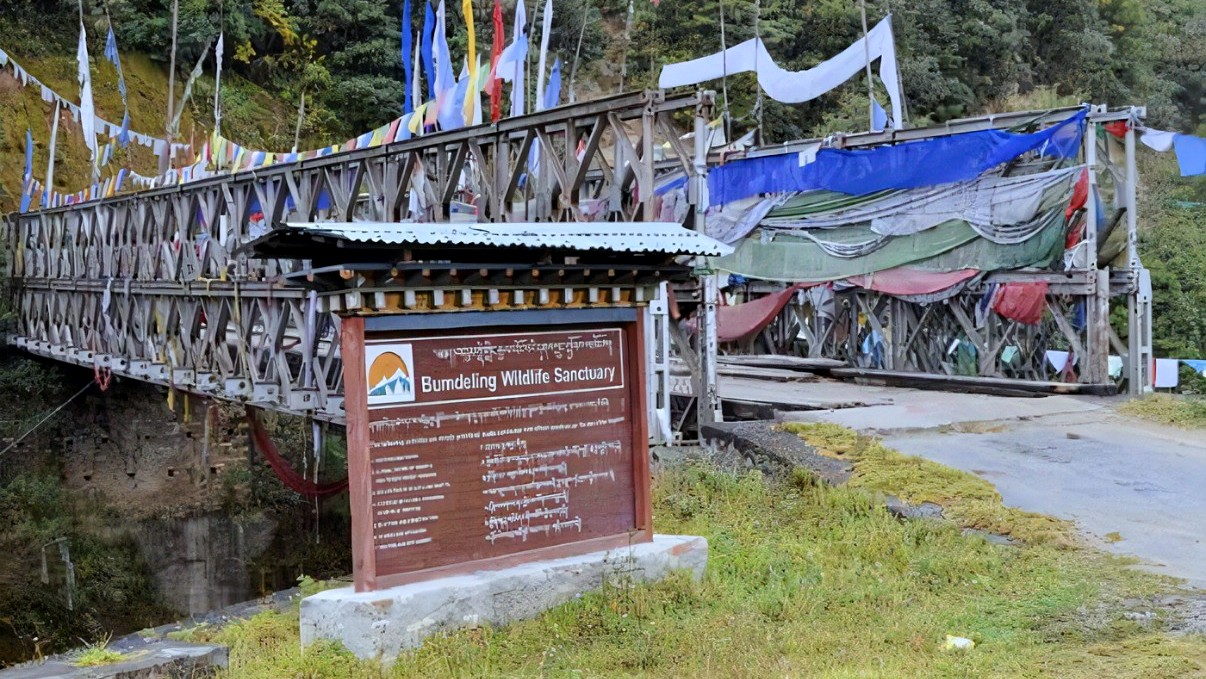
- Overview: Established in 1995, Bumdeling Wildlife Sanctuary covers approximately 1,520 square kilometers in northeastern Bhutan, encompassing parts of the Trashiyangtse District. It serves as a critical habitat linking to other protected areas across Bhutan and India, forming a continuous ecological network that is vital for wildlife migrations, especially for migratory birds.
- Biodiversity: The sanctuary is renowned for its rich biodiversity, particularly its avian population. It is one of the most important wintering grounds for the black-necked crane in Bhutan, with these majestic birds visiting the area from late October to mid-February each year. Besides the cranes, Bumdeling is home to other species such as the red panda, snow leopard, and Himalayan black bear. The area's diverse ecosystems range from subtropical to alpine, hosting a variety of flora and fauna that contribute to its ecological diversity.
- Eco-Tourism and Activities: Bumdeling Wildlife Sanctuary offers numerous eco-tourism opportunities, primarily focused around bird watching and nature treks. The annual arrival of the black-necked cranes is a major attraction, drawing visitors and ornithologists keen to observe these elegant birds in their natural habitat. The sanctuary also provides trails for trekking and community-led tours that explore the rich cultural heritage intertwined with the natural landscape.
- Conservation Efforts: Conservation efforts in Bumdeling are particularly focused on the black-necked crane, along with habitat conservation for other endangered species. Efforts include habitat management, anti-poaching patrols, and community-based conservation programs that engage local villagers in the sanctuary's management. These initiatives help mitigate human-wildlife conflicts and promote sustainable use of natural resources.
- Challenges: The sanctuary faces several conservation challenges, including habitat degradation, human-wildlife conflict, and the impacts of climate change, which affect the migratory patterns of the black-necked crane and other species. Addressing these challenges requires ongoing research, monitoring, and adaptation of conservation strategies.
- Cultural Significance: Bumdeling Wildlife Sanctuary is not only important for its biodiversity but also for its cultural significance. The area is considered sacred by the local communities, who participate in annual rituals and festivals that celebrate their connection to the natural world. These cultural practices are vital for maintaining the link between community welfare and wildlife conservation.
Bumdeling Wildlife Sanctuary is a cornerstone in Bhutan's environmental conservation framework, showcasing the successful integration of community, culture, and conservation. Its management practices provide a model for balancing ecological integrity with human needs, ensuring the protection of its unique natural and cultural heritage for future generations.
Sakteng Wildlife Sanctuary
Sakteng Wildlife Sanctuary is a unique and captivating conservation area in Bhutan, known for its mystical allure and rich biodiversity. Here’s an insightful look into this remote sanctuary:
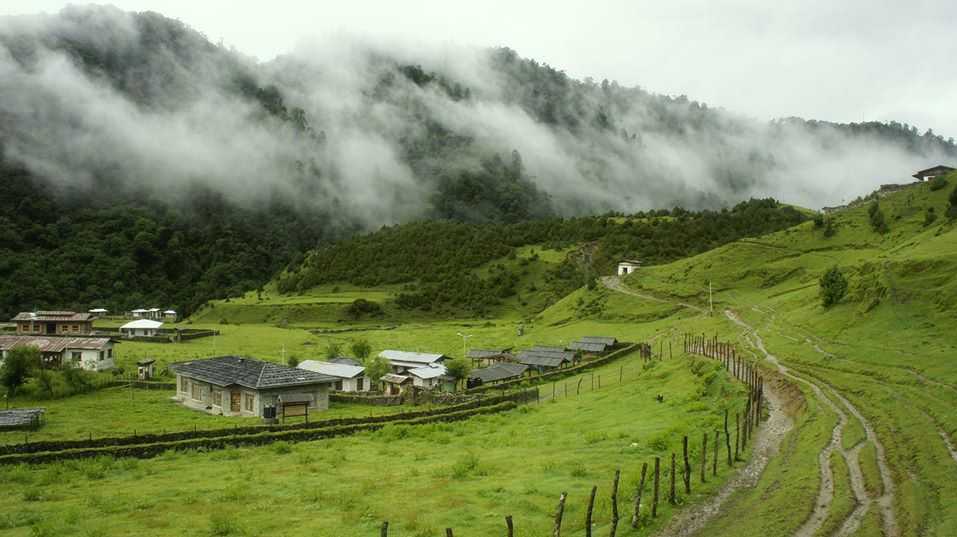
- Overview: Established in 2003, Sakteng Wildlife Sanctuary spans an area of approximately 650 square kilometers in the easternmost part of Bhutan, in Trashigang District. This sanctuary is part of Bhutan's broader approach to environmental conservation, specifically designed to protect the unique ecosystem of the eastern Himalayas.
- Biodiversity: Sakteng stands out for its distinctive flora and fauna, adapted to the subalpine and alpine zones, which dominate the landscape. It is famously home to the mythical Yeti, or Migoi, which, according to local legend, roams its forests. While the existence of the Yeti is unproven, the sanctuary is a known habitat for the red panda, Himalayan black bear, snow leopard, and Bhutan takin. Additionally, it supports a diverse range of birds and plants, some of which are unique to this part of Bhutan.
- Eco-Tourism and Activities: Sakteng is relatively untouched by mass tourism, making it a perfect destination for those looking to experience pristine natural environments and authentic cultural interactions. The sanctuary offers a range of activities, including trekking through its beautiful landscapes, wildlife watching, and participation in local festivals. The Sakteng Trek is particularly popular, providing visitors with breathtaking views and the chance to witness the traditional lifestyle of the semi-nomadic Brokpa people, indigenous to the area.
- Conservation Efforts: Conservation in Sakteng is primarily focused on protecting its unique ecosystem and the species that inhabit it. Efforts include habitat preservation, anti-poaching initiatives, and community-based programs that involve local populations in the stewardship of their environment. These programs are crucial for maintaining the ecological balance and ensuring that eco-tourism has a minimal environmental impact.
- Challenges: As with many protected areas, Sakteng faces challenges such as climate change, which threatens its sensitive alpine habitats. There is also the need to balance conservation with the economic needs of local communities, ensuring that development initiatives do not undermine the sanctuary’s ecological integrity.
- Cultural Significance: Sakteng is deeply embedded in the cultural fabric of the Brokpa communities. It is not only a place of environmental importance but also a cultural heritage site where traditional beliefs and practices are closely tied to the land and its conservation. Festivals and traditional practices in Sakteng are vibrant expressions of this relationship, with the annual Merak festival being a highlight that attracts visitors and locals alike.
Sakteng Wildlife Sanctuary represents a critical piece of Bhutan’s conservation puzzle, embodying the country's commitment to preserving its natural heritage while fostering a harmonious relationship between its people and the environment. This sanctuary offers a unique window into the ecological and cultural richness of Eastern Bhutan, making it a must-visit for those interested in the road less traveled.
Bhutan's national parks and wildlife sanctuaries are essential pillars of its environmental and cultural heritage, embodying the country's profound commitment to conservation and sustainable development. These protected areas safeguard a remarkable array of biodiversity, including endangered species and unique ecosystems, while also supporting the traditional lifestyles of local communities. As pristine havens for eco-tourism, they offer unforgettable experiences through scenic treks, wildlife observation, and cultural immersion. Bhutan's approach to conservation ensures that these treasures are preserved for future generations, continuing to make the kingdom a model of ecological stewardship and a sanctuary of natural beauty in the heart of the Himalayas.
FAQs on National Parks and Wildlife Sanctuaries in Bhutan
Q: What are the main national parks and wildlife sanctuaries in Bhutan?
A: Major national parks include Jigme Dorji National Park, Royal Manas National Park, and Bumdeling Wildlife Sanctuary. Notable wildlife sanctuaries include Sakteng Wildlife Sanctuary and Phibsoo Wildlife Sanctuary.
Q: What types of ecosystems can be found in Bhutan’s national parks?
A: Bhutan's national parks and sanctuaries encompass a diverse range of ecosystems, from subtropical forests and grasslands in the south to temperate forests and alpine meadows in the north.
Q: Which species are protected in Bhutan’s conservation areas?
A: Protected species include the Bengal tiger, snow leopard, red panda, black-necked crane, and Bhutan takin, among others.
Q: Can I visit these parks and sanctuaries? What activities are available?
A: Yes, most parks and sanctuaries are open to visitors. Activities include trekking, bird watching, wildlife safaris, and participating in local cultural experiences.
Q: What is the best time to visit Bhutan's national parks and sanctuaries?
A: The best times to visit are during the spring (March to May) and autumn (September to November) when the weather is clear and conducive for trekking and wildlife watching.
Q: Do I need special permits to visit these parks?
A: Yes, visitors typically need permits to enter national parks and sanctuaries. These can usually be arranged through a registered tour operator like Amen Bhutan Tours and Treks.
Q: How does Bhutan ensure the conservation of these areas?
A: Conservation in Bhutan is supported by strict environmental policies, sustainable tourism practices, and community involvement in conservation efforts, ensuring minimal impact on natural resources.
Q: Are there opportunities for wildlife photography within these parks?
A: Absolutely, Bhutan’s national parks and wildlife sanctuaries are excellent locations for wildlife photography, thanks to their rich biodiversity and scenic landscapes.
Q: How does visiting these parks contribute to conservation efforts?
A: Tourism revenue helps fund conservation projects, anti-poaching efforts, and community welfare initiatives, directly contributing to the protection and maintenance of these areas.
Q: What should I be aware of when visiting Bhutan’s national parks and sanctuaries?
A: Visitors should respect wildlife and natural habitats, follow all park regulations, and ensure that they leave no trace of their visit to protect the integrity and natural beauty of these areas.
If you are looking for tour packages in Bhutan please click here
If you need any further information, please contact us, Email: at [email protected] , Phone (Whatsapp or Viber) +975-1755-663
